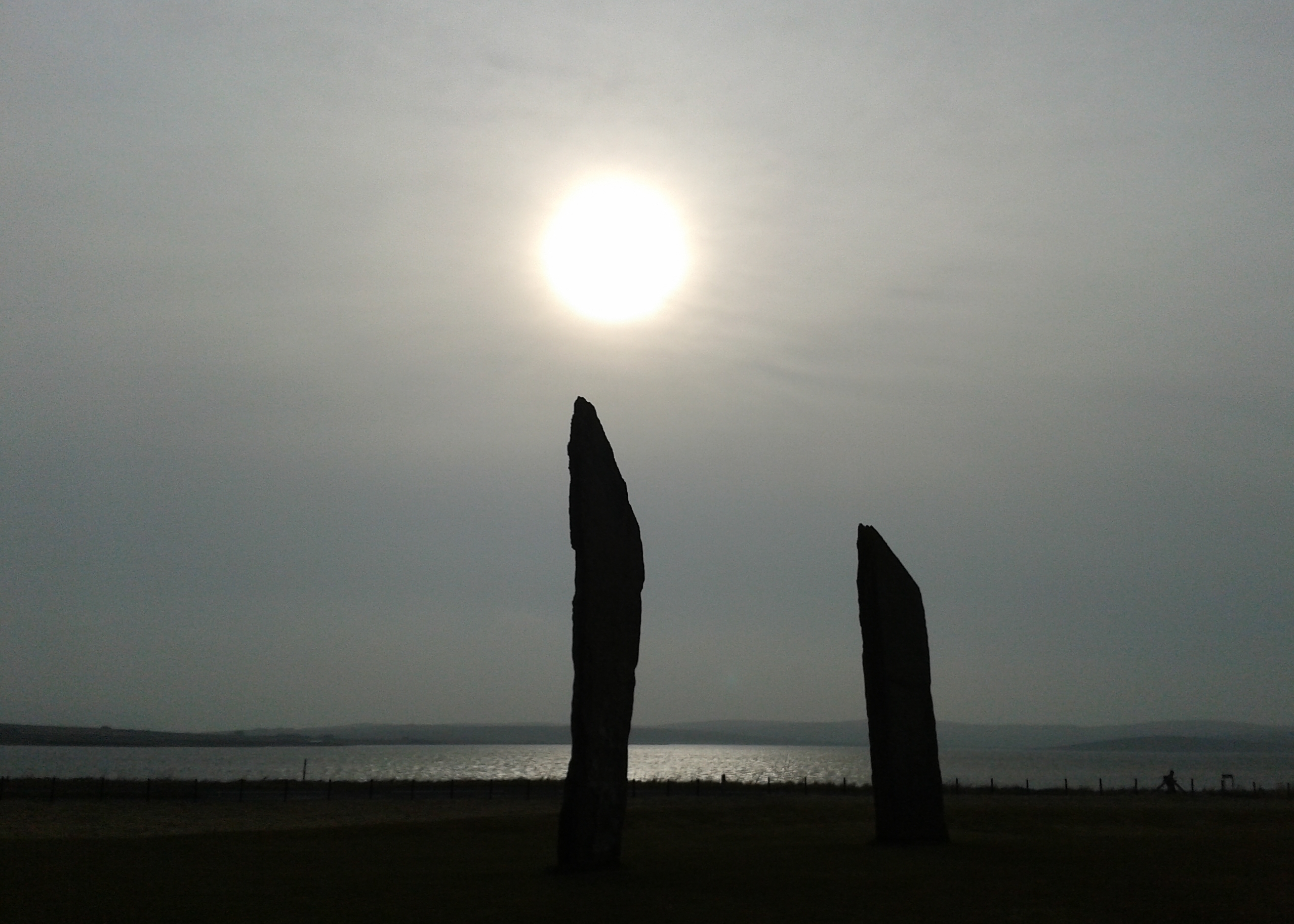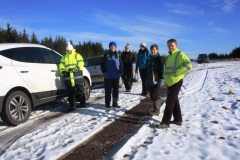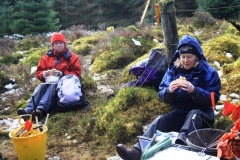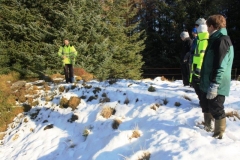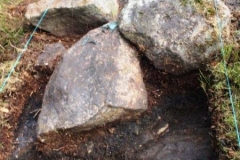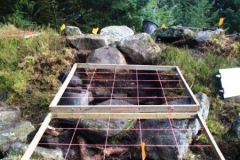Category: Archived News
Dig It! 2015 Newfield Printworks, Rouken Glen April 7 – 11
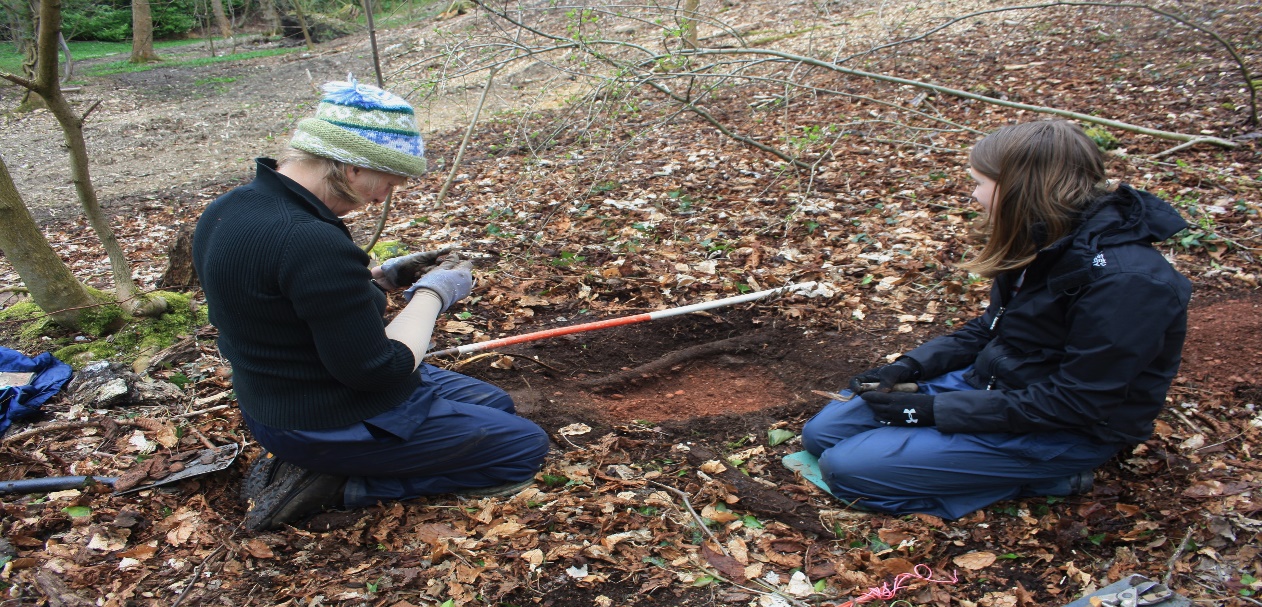
ACFA and local volunteers led by Phil Richardson and Fiona Watson from Archaeology
Scotland participated in a week of excavations in generally fine weather to attempt to identify any surviving remains from one of the earliest printworks in Scotland, established on the banks of the Auldhouse Burn now in Rouken Glen Park. This complements the work undertaken last year further up the burn on the site of the earlier grain mill at Rouken.
In the late AD1770’s a Robert Osborne swiftly bankrupted himself erecting the Newfield Print Works on the site, which were then acquired by the Crum dynasty from AD1789 – 1895, as part of their development of Thornliebank into a textile empire which embraced the area into the 1930’s.
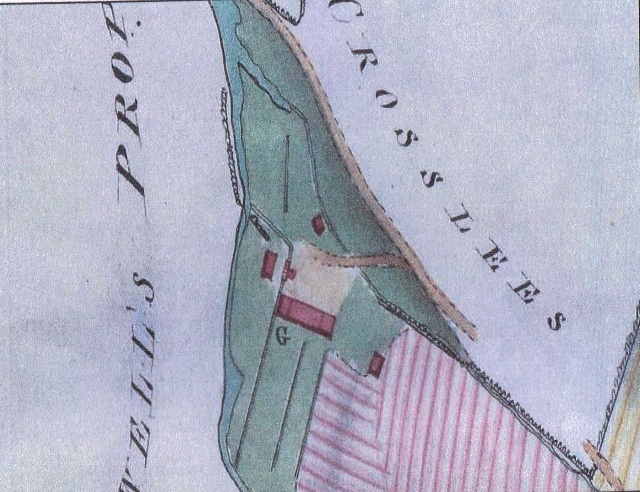 An AD1789 survey of Osborne’s mill at Brocklees clearly identifies five structures and a well-built lade tapping the burn. This mill vanished under Crum’s expansion in the mid AD19C but the OS AD1858 map suggests that lengths of the original mill lade might have survived within the area of lades of milky grey water, overgrown and infilled reservoirs, subterranean overflow channels and moss covered weirs of masonry blocks which remain. It now potentially lies under a steep wooded embankment immediately to the north of the current main car park. A series of metre test pits were laid out running from the revetment of a later weir which submerged the length of its predecessor, to the current embankment at Rouken Glen Road.
An AD1789 survey of Osborne’s mill at Brocklees clearly identifies five structures and a well-built lade tapping the burn. This mill vanished under Crum’s expansion in the mid AD19C but the OS AD1858 map suggests that lengths of the original mill lade might have survived within the area of lades of milky grey water, overgrown and infilled reservoirs, subterranean overflow channels and moss covered weirs of masonry blocks which remain. It now potentially lies under a steep wooded embankment immediately to the north of the current main car park. A series of metre test pits were laid out running from the revetment of a later weir which submerged the length of its predecessor, to the current embankment at Rouken Glen Road.
No convincing indications were detected in such a short programme, but expectations were 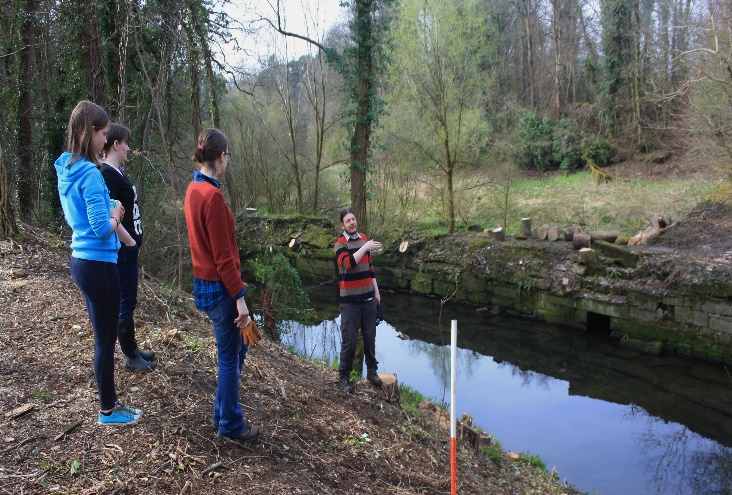 encouraged by the observation on a day of clear sun of a submerged flagged length of a narrower lade line, under the waters of the weir pond. Projection of this line to our slope suggested that the alignment may have been a metre higher than the test pit run and awaits deeper investigation.
encouraged by the observation on a day of clear sun of a submerged flagged length of a narrower lade line, under the waters of the weir pond. Projection of this line to our slope suggested that the alignment may have been a metre higher than the test pit run and awaits deeper investigation.
The ACFA team consisted of Janie Munro, Susan Hunter (with granddaughter Emma), Ian Marshall and Ian McAdam, regular local archaeological graduates, Amy and Catherine – and a range of local volunteers. Children enthused with supervised trowelling of Granny’s china pieces and subsequent careful attempts to reconstruct a decent tea service, a range of other ceramic offerings (including a shard of possible green glaze) and encrusted iron ‘wonderful things’, and the adults enjoyably disgraced themselves wading through the weir with a ranging staff to plot in the submerged lade.
“And then what larks we shall have Pip”.

Dig Art! 2015 New Archaeology, Art and Photography Competition Launched
Grab your cameras, pencils, paintbrushes and trowels because Dig Art! 2015 is uncovering Scotland’s creative potential through archaeology. Winning entries from this art and photography competition will be exhibited as massive banners in Glasgow as part of the European Association of Archaeologists Glasgow 2015 Conference and Our Place in Time Arts Festival in September. This international Conference, to be held in Scotland for the first time, will see thousands of archaeologists from across Europe flock to the city.
The competition is open to all from budding artists to smart phone photographers. For more information about how your creative work might appear all across Glasgow go to the Dig Art! 2015 site.
Return to Rona
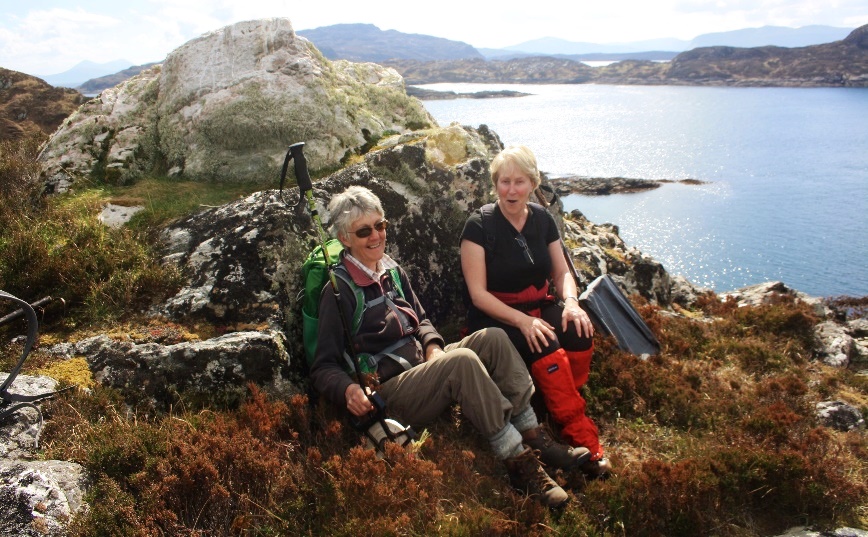 Another astonishing week of spring sunshine on Rona, our fourth and possibly final season. We arrived on Skye in brilliant sunshine with the Cuillins still dusted with snow and crossed over to Rona in Kevin and Pam’s splendid new boat, the “Aspire”, a converted East Anglian fishing boat, to be met by Bill Cowie and Lorraine. Afternoon was spent walking over our original stamping ground of Dry Harbour, in which one keen team plunged into old woodland and confidently led by one member, got themselves temporarily lost and found themselves sclimming up rock faces to get out, the Health and Safety sheet having been signed up just two hours previously. No names, no packdrill !
Another astonishing week of spring sunshine on Rona, our fourth and possibly final season. We arrived on Skye in brilliant sunshine with the Cuillins still dusted with snow and crossed over to Rona in Kevin and Pam’s splendid new boat, the “Aspire”, a converted East Anglian fishing boat, to be met by Bill Cowie and Lorraine. Afternoon was spent walking over our original stamping ground of Dry Harbour, in which one keen team plunged into old woodland and confidently led by one member, got themselves temporarily lost and found themselves sclimming up rock faces to get out, the Health and Safety sheet having been signed up just two hours previously. No names, no packdrill !
With fine weather holding for all five days, the team split generally in two groups – one went faithfully down the long but lovely track to the chapel at An Teampull for three days to complete the elevations and a better plan of the area; and a second group began the survey of the bay and harbour of Acarseid Mor. This proved quite exciting with more than 40 features and structures recorded and suggesting that the occupational time depth so singularly lacking in the main from the sites of Braigh, Dry Harbour and Doire na Guaile, may well be here around what must always have been the main anchorage for the island.
Highlights of the week were more scrumptious meals every night from Libby and Margaret, evenings sitting out on the decking watching the sun go down over the Sound of Raasay with libations in hand, slumped in front of the wood fire reading books or watching old films on the brand new DVD recorder (the old one would geriatrically expire every 10 minutes) and random chunterings about what we had picked up that day, including the evening tick counts to be compared (winner was 31).
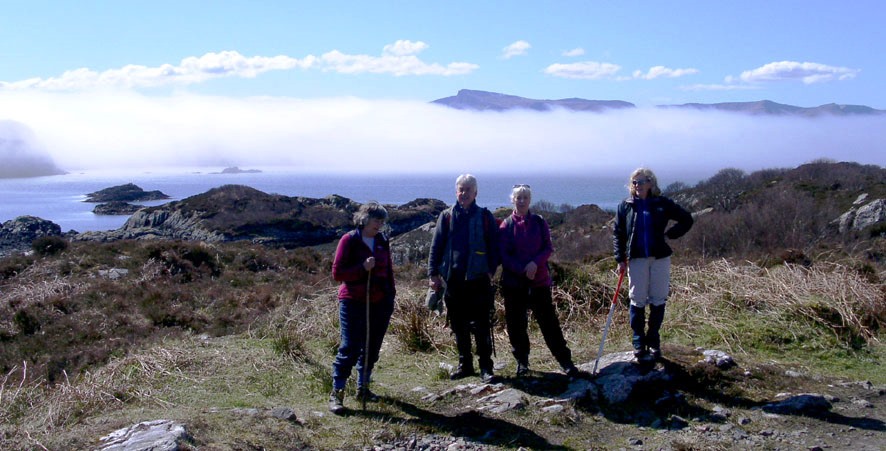
A great week in good company – will we be back, who knows. “I go. I come back”.
2015 Photography Competition Launched
This year’s members’ photography competition has been launched with the publication of new simpler rules. Competing for the ACFA Memorial Quaich, members can submit up to three photographs with any subject as long as it relates to archaeology. Entries will be accepted as 5″x7″ prints or in digital form via email. Full information can be found in the Members’ Area.
